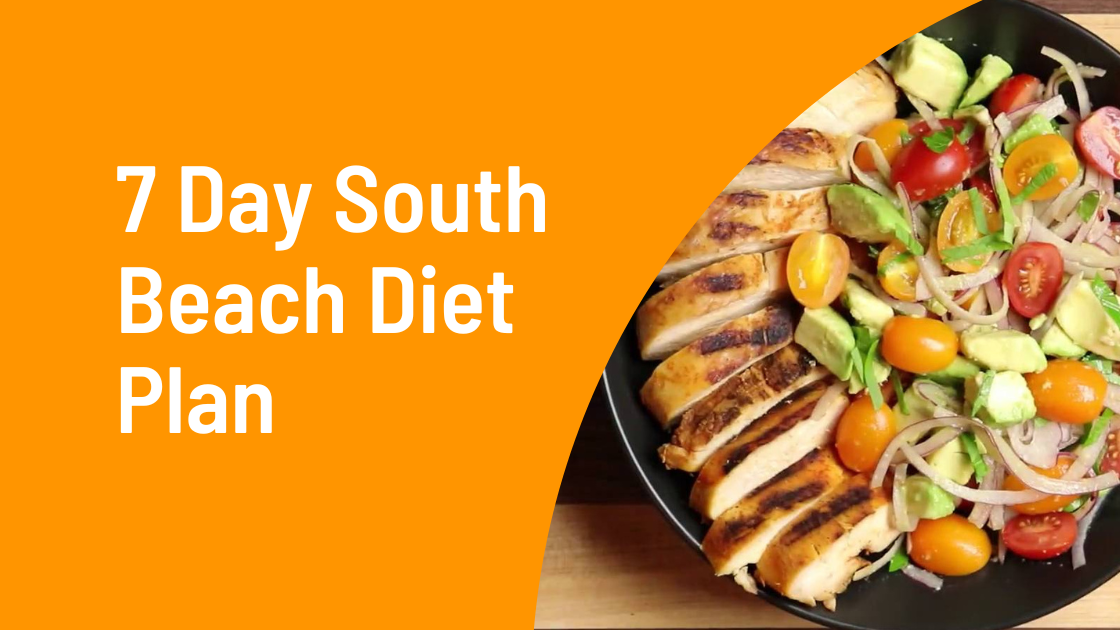South Beach Diet exercise is more than just weight loss; it’s about integrating physical activity seamlessly into a structured dietary plan. This approach emphasizes a holistic wellness journey, combining the principles of the South Beach Diet – a low-carbohydrate, high-protein approach focused on healthy fats and whole foods – with a tailored exercise regimen. The result is a synergistic effect, boosting metabolism, enhancing weight management, and promoting overall well-being. This guide explores how to effectively combine these two crucial elements for optimal results, covering various exercise types, personalized plan creation, and strategies for overcoming common challenges.
We will delve into the specifics of each phase of the South Beach Diet and how exercise intensity should be adjusted accordingly. We’ll examine different exercise modalities, from cardiovascular training to strength building and flexibility exercises, explaining their benefits and potential risks. Furthermore, we’ll provide practical examples of workout plans, pre- and post-workout meal ideas, and crucial strategies for managing hunger and fatigue, ensuring a sustainable and successful journey.
South Beach Diet Principles and Exercise Integration
The South Beach Diet, unlike many restrictive diets, emphasizes sustainable weight loss through balanced nutrition and mindful eating habits. It’s structured in phases, each designed to progressively introduce different food groups while managing insulin levels and promoting healthy blood sugar control. Integrating exercise enhances the diet’s effectiveness, leading to improved overall health and fitness.
Core Tenets of the South Beach Diet
The South Beach Diet primarily focuses on limiting refined carbohydrates and unhealthy fats while prioritizing lean proteins, healthy fats, and plenty of non-starchy vegetables. Phase 1, the most restrictive, eliminates most sugars, processed foods, and unhealthy fats to jumpstart weight loss and stabilize blood sugar. Subsequent phases gradually reintroduce some carbohydrates, always favoring complex carbs over simple sugars. This approach is designed to reduce cravings, promote satiety, and encourage long-term adherence.
Phase Alignment with Exercise Intensities
The intensity of exercise should align with the phase of the South Beach Diet. Phase 1, due to its restrictive nature, requires gentler exercise to avoid overexertion and potential fatigue. As you progress through the phases, and your energy levels increase, the intensity and duration of workouts can also increase. This approach prevents burnout and ensures sustainable fitness progress alongside weight loss.
Suitable Exercises for Each Phase
The following table provides examples of appropriate exercises for each phase. Remember to consult your physician before starting any new exercise program.
| Phase | Suitable Exercises |
|---|---|
| Phase 1 | Gentle walks, yoga, swimming (low intensity), light strength training (bodyweight exercises) |
| Phase 2 | Brisk walking, cycling, moderate-intensity swimming, strength training (moderate weights), Pilates |
| Phase 3 | Running, HIIT workouts, team sports, weight training (higher weights and intensity), hiking |
Sample Weekly Workout Plan
This sample workout plan integrates exercise with the South Beach Diet phases. Remember to listen to your body and adjust the intensity and duration as needed.
| Day | Morning Exercise | Afternoon Exercise | Evening Activity |
|---|---|---|---|
| Monday | 30-minute brisk walk | Yoga (30 minutes) | Relaxation techniques (meditation, deep breathing) |
| Tuesday | Strength training (bodyweight exercises, 30 minutes) | Rest | Gentle stretching |
| Wednesday | 30-minute cycling | Swimming (30 minutes, low intensity) | Rest |
| Thursday | Strength training (bodyweight exercises, 30 minutes) | Rest | Gentle walk |
| Friday | 30-minute brisk walk | Yoga (30 minutes) | Relaxation techniques |
| Saturday | Longer walk or hike (60 minutes) | Rest | Light stretching |
| Sunday | Rest or light activity (yoga, stretching) | Rest | Relaxing activity (reading, spending time in nature) |
Exercise Types Suitable for the South Beach Diet
The South Beach Diet, emphasizing healthy fats and limiting refined carbohydrates, benefits significantly from a well-rounded exercise program. Choosing the right types of exercise is crucial for maximizing weight loss, improving overall health, and maintaining energy levels while adhering to the dietary restrictions. The following sections detail suitable exercise types and their integration with the South Beach Diet principles.
Cardiovascular Exercises and Strength Training Compared
Cardiovascular exercise and strength training offer distinct yet complementary benefits within the context of the South Beach Diet. Cardiovascular activities, such as brisk walking, jogging, swimming, or cycling, primarily improve cardiovascular health, burn calories, and enhance endurance. Strength training, involving exercises like weightlifting, bodyweight exercises, or resistance band workouts, builds muscle mass, increases metabolism, and improves bone density. While cardio directly contributes to calorie expenditure and weight loss, strength training boosts metabolism, leading to increased calorie burning even at rest. Both are essential for a comprehensive fitness regimen supporting the South Beach Diet’s goals. The ideal approach often involves a combination of both, balancing cardiovascular workouts with regular strength training sessions.
High-Intensity Interval Training (HIIT) Benefits
High-Intensity Interval Training (HIIT) is a particularly effective exercise approach for individuals following the South Beach Diet. HIIT involves short bursts of intense exercise followed by brief recovery periods. This method is highly efficient, maximizing calorie burn and improving cardiovascular fitness in a shorter timeframe compared to traditional steady-state cardio. Studies show that HIIT can be just as effective, or even more so, than longer duration moderate-intensity exercise for improving fitness markers. For example, a study published in the Journal of Obesity showed that HIIT resulted in greater fat loss compared to moderate-intensity continuous training in overweight and obese individuals. The short, intense nature of HIIT also makes it easily adaptable to busy schedules, a significant advantage for those managing dietary changes and other commitments.
Flexibility and Balance Exercises
Flexibility and balance exercises, often overlooked, play a crucial role in overall health and well-being, especially when combined with a dietary plan like the South Beach Diet. Activities like yoga, Pilates, and Tai Chi improve flexibility, range of motion, and posture. This is important because maintaining good posture and flexibility can reduce the risk of injury during more intense workouts. Furthermore, improved balance reduces the risk of falls and injuries, especially important as we age. Incorporating these practices enhances overall physical function, reduces stress, and promotes relaxation, contributing to a healthier lifestyle alongside the dietary modifications.
Risks of Intense Exercise on a Restrictive Diet
While exercise is beneficial, combining intense workouts with a restrictive diet like the South Beach Diet carries potential risks. Overtraining can lead to exhaustion, muscle breakdown, and decreased immunity. The body needs sufficient energy to support both physical activity and the metabolic demands of dietary changes. Insufficient calorie intake can impair recovery, leading to increased susceptibility to injuries and illnesses. Furthermore, electrolyte imbalances can occur due to fluid loss during intense exercise, particularly important to monitor in the context of dietary sodium restrictions. Careful monitoring of energy levels, hydration, and potential signs of overtraining is essential to mitigate these risks. Consulting with a healthcare professional or registered dietitian is recommended before embarking on an intense exercise program while following a restrictive diet.
Addressing Potential Challenges
Combining the South Beach Diet with an exercise program can be highly effective for weight loss and overall health improvement, but it’s crucial to acknowledge potential difficulties and develop strategies to overcome them. Many individuals encounter obstacles that can derail their progress if not properly addressed. Understanding these challenges and proactively implementing solutions is key to long-term success.
Successfully integrating the South Beach Diet and exercise requires a holistic approach that considers both nutritional and physical demands. Ignoring potential pitfalls can lead to frustration, setbacks, and ultimately, abandonment of the program. Therefore, proactive planning and consistent self-monitoring are essential.
Weight Loss Plateaus
Weight loss plateaus are a common experience for individuals following any diet and exercise program. These plateaus occur when weight loss slows or stops despite consistent adherence to the diet and exercise plan. Several factors can contribute to this, including metabolic adaptation, hormonal fluctuations, and a decrease in caloric expenditure due to weight loss itself. Overcoming a plateau requires a multifaceted approach. This might involve slightly adjusting caloric intake, increasing exercise intensity or duration, incorporating different types of exercise to challenge the body in new ways, or reassessing the overall diet plan to ensure sufficient nutrient intake. For example, increasing the intensity of cardio workouts or incorporating strength training can help boost metabolism and burn more calories. Similarly, making minor adjustments to portion sizes or macronutrient ratios within the South Beach Diet guidelines can help jumpstart weight loss again.
Maintaining Motivation and Consistency
Maintaining motivation and consistency is often the biggest hurdle in any weight loss journey. The initial enthusiasm can wane over time, especially when facing challenges like plateaus or lifestyle changes. Strategies for maintaining motivation include setting realistic goals, tracking progress, rewarding oneself for milestones (non-food related rewards are best), and finding an exercise buddy for accountability and support. Visualizing success and focusing on the positive changes in energy levels and overall health can also help sustain motivation. Planning ahead for potential obstacles, such as busy work schedules or social events, is also important. Preparing healthy meals in advance and identifying alternative exercise options can help prevent lapses in the plan. For example, a person might schedule workouts in advance and treat them like important appointments.
Listening to Your Body and Adjusting the Plan
Ignoring physical cues can lead to injuries and burnout. It is essential to listen to your body and adjust the exercise plan accordingly. This means recognizing signs of overtraining, such as persistent muscle soreness, fatigue, or decreased performance. Rest and recovery are crucial components of any successful exercise program. Similarly, the South Beach Diet should be adjusted based on individual needs and responses. For example, if you experience digestive discomfort, you might need to adjust your carbohydrate intake or explore alternative food choices within the diet guidelines. Consulting a healthcare professional or registered dietitian can provide personalized guidance and support in making necessary adjustments. They can help determine if any underlying medical conditions are impacting your progress and recommend appropriate modifications to your diet and exercise plan.
Ultimate Conclusion
Successfully integrating the South Beach Diet with a suitable exercise program offers a powerful path towards achieving your health and fitness goals. By understanding the principles of each and tailoring a plan to your individual needs and fitness level, you can unlock the synergistic benefits of both. Remember that consistency, listening to your body, and making adjustments as needed are key to long-term success. This holistic approach empowers you to not just lose weight, but to build strength, increase energy levels, and cultivate a sustainable lifestyle focused on overall well-being.




